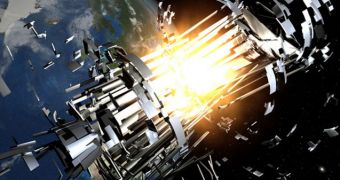Officials at the European Space Agency (ESA) have announced their intentions to build their own space junk monitoring system, which they say could come in very handy during future spacecraft launches.
At this point, the United States is one of the very few countries that have such a system in place. The US uses it to keep track of several thousand pieces of space debris, all larger than an inch. But the total number of debris is way larger.
NASA and the US Air Force have been saying for years that they need help from the international community in this regard. Plus, the space junk was created by all countries with a space program.
Monitoring spent rocket stages, satellite debris, shards of metal and paint, and other objects flying through low-Earth orbit is critically important towards guaranteeing the safety of outbound spacecraft on their way to orbit.
For this reasons, ESA has decided to construct the most advanced monitoring system in the world, that will have the ability to track several thousand pieces of debris at the same time, Space reports.
Orbital debris are in the nasty habit of traveling at speeds upwards of 17,400 miles per hour(28,000 kilometers per hour). This means that they literally pass through anything they come across.
This is very dangerous for essential communications satellites, as well as for the International Space Station (ISS) and its permanent, six-astronaut crew. The orbital facility is regularly moved out of its standard orbit in order to make way for space junk zipping past.
The new ESA system will allow for more awareness due to an improved radar it will contain, that will be able to track between 15,000 and 20,000 objects for up to 10 seconds daily. This will allow the space agency to be very well informed about how things are unfolding in orbit.
One of the most important contributions to the amount of junk currently spinning around Earth was a collision that took place in February 2009. A functioning American satellite collided with a defunct Russian spacecraft, and the two got pulverized.
The debris they generated – thousands of pieces – are now threatening to trigger a chain of events that would literally clog the orbit for years to come.
The new ESA system “can observe a large number of objects simultaneously, detecting their position to a high degree of accuracy and sensitivity,” explains expert Andreas Brenner.
The expert, who holds an appointment as a department head at the Fraunhofer Institute for High Frequency Physics and Radar Techniques, in Wachtberg, Germany, is one of the experts involved in creating the new radar.

 14 DAY TRIAL //
14 DAY TRIAL //